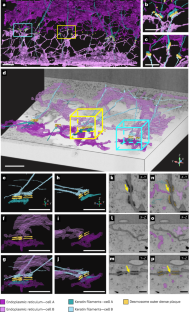2023-10-13 ペンシルベニア州立大学(PennState)
◆特に、女性はこれらの微小損傷からの回復が男性よりも難しいため、女性のACL怪我が男性よりも多い理由の一部を説明できるかもしれません。
◆研究では、雄雌のうさぎのACL靭帯を使い、生体反応を模倣しながら組織を観察し、力を加えて癒しに関連する遺伝子の発現を測定しました。その結果、男性の場合、低い力では発現が増加し、大きな力では減少する一方、女性の場合は力の量が発現に影響を与えなかった。
◆性差は女性の体内のエストロゲン量に起因する可能性があり、エストロゲンがACL怪我に対する影響を説明するためにさらなる研究が予定されています。この研究結果は、女性の怪我後の回復に追加の時間を与えることが有益である可能性があり、ACL怪我を予防するための治療法の開発に役立つかもしれません。
<関連情報>
- https://www.psu.edu/news/research/story/females-less-likely-heal-acl-injuries-males/
- https://onlinelibrary.wiley.com/doi/10.1002/jor.25677
ACLにおいて、周期的負荷が負荷依存的かつ性特異的に同化遺伝子の発現を誘導する。 Cyclic loading induces anabolic gene expression in ACLs in a load-dependent and sex-specific manner
Lauren Paschall, Sabrina Carrozzi, Erdem Tabdanov, Aman Dhawan, Spencer E. Szczesny
Journal of Orthopaedic Research Published: 21 August 2023
DOI:https://doi.org/10.1002/jor.25677

Abstract
Anterior cruciate ligament (ACL) injuries are historically thought to be a result of a single acute overload or traumatic event. However, recent studies suggest that ACL failure may be a consequence of fatigue damage. Additionally, the remodeling response of ACLs to fatigue loading is unknown. Therefore, the objective of this study was to investigate the remodeling response of ACLs to cyclic loading. Furthermore, given that women have an increased rate of ACL rupture, we investigated whether this remodeling response is sex specific. ACLs were harvested from male and female New Zealand white rabbits and cyclically loaded in a tensile bioreactor mimicking the full range of physiological loading (2, 4, and 8 MPa). Expression of markers for anabolic and catabolic tissue remodeling, as well as inflammatory cytokines, was quantified using quantitative reverse transcription polymerase chain reaction. We found that the expression of markers for tissue remodeling of the ACL is dependent on the magnitude of loading and is sex specific. Male ACLs activated an anabolic response to cyclic loading at 4 MPa but turned off remodeling at 8 MPa. These data support the hypothesis that noncontact ACL injury may be a consequence of failed tissue remodeling and inadequate repair of microtrauma resulting from elevated loading. Compared to males, female ACLs failed to increase anabolic gene expression with loading and exhibited higher expression of catabolic genes at all loading levels, which may explain the increased rate of ACL tears in women. Together, these data provide insight into load-induced ACL remodeling and potential causes of tissue rupture.


